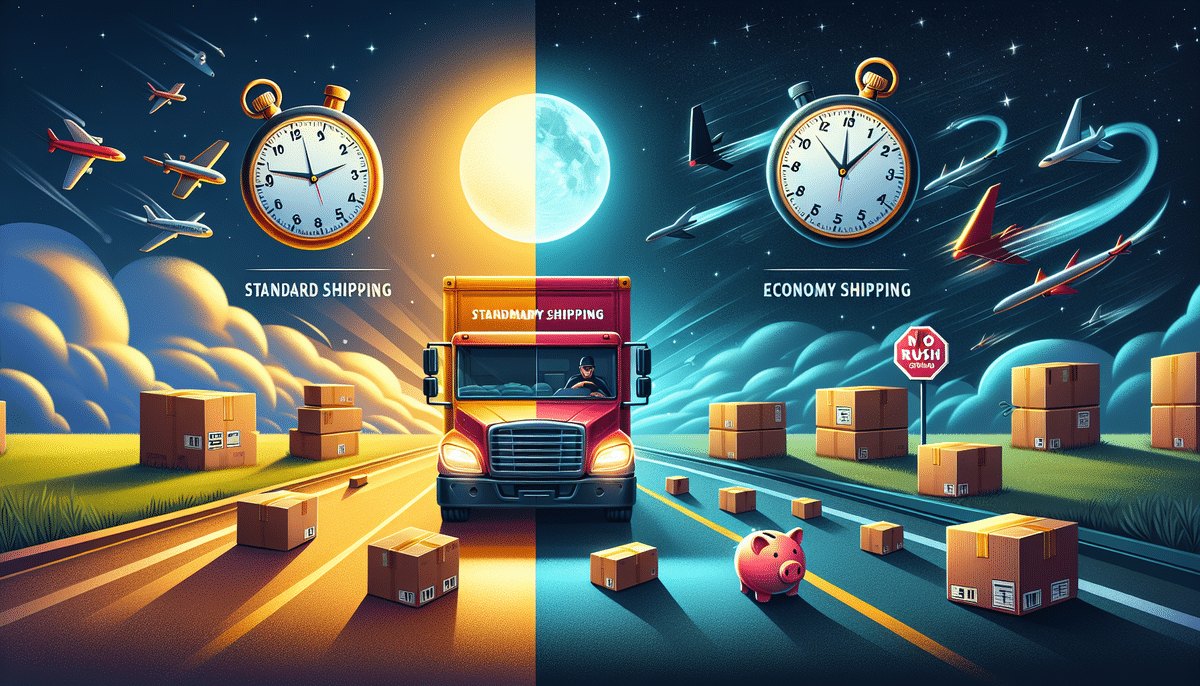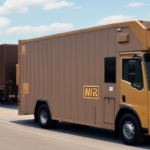Deciding Between Standard and Economy Shipping: What You Need to Know
When it comes to making delivery decisions, choosing between standard and economy shipping options can be baffling. Both choices appear to offer similar services, but there are key differences to consider. In this article, we'll delve into the factors you need to weigh when selecting a shipping method, including the definitions and types of standard and economy shipping, their respective advantages and disadvantages, and how they differ in terms of cost, delivery times, and tracking.
Understanding Standard Shipping
What is Standard Shipping?
Standard shipping typically refers to the standard delivery methods employed by most delivery companies and postal services worldwide. It is a reliable and familiar option with a convenient and predictable delivery schedule. Generally, it is less expensive than express or overnight shipping, making it an affordable choice for shipping large or heavy items that are not time-sensitive, such as books, art, or clothing.
How Does Standard Shipping Work?
Standard shipping methods usually involve ground transportation or surface mail, which is typically slower than air freight. However, this method is often more cost-effective for long-distance or international shipping since it avoids the higher costs associated with air transport or expedited services.
Environmental Impact
Another advantage of standard shipping is its environmental friendliness compared to express shipping options. Ground transportation has a lower carbon footprint than air transportation. By choosing standard shipping, you can reduce your carbon footprint and contribute to a more sustainable shipping industry.
According to the Environmental Protection Agency (EPA), ground shipping transportation can be significantly less carbon-intensive than air shipping.
Exploring Economy Shipping
What is Economy Shipping?
Economy shipping is another delivery option that is typically slower and less expensive than standard shipping methods. It offers similar delivery services but at a lower cost and with longer delivery times. Economy shipping is usually best for low-value, non-urgent, or lightweight items that do not require quick delivery. Like standard shipping, economy shipping uses surface transportation methods rather than air.
Advantages of Economy Shipping
- Affordability makes it ideal for shipping lower-value or lightweight items.
- Cost-effective for larger or bulkier items due to lower transport costs.
- Suitable for non-urgent deliveries, allowing for extended delivery periods.
Potential Drawbacks
However, economy shipping may not always be the best option. For instance, if you're sending fragile or perishable items, a faster shipping method may be necessary to ensure they arrive in good condition. Additionally, economy shipping might lack comprehensive tracking and insurance options, posing a risk for valuable or fragile items.
Comparing the Pros and Cons
Pros of Standard Shipping
- Reliability and predictable delivery schedule.
- More affordable than express delivery options.
- Often includes tracking and insurance options.
- More environmentally friendly due to lower carbon emissions.
Cons of Standard Shipping
- Longer delivery times compared to express shipping.
- May not be suitable for heavy or bulky items requiring special handling.
- Basic tracking may not be as detailed as express options.
Pros of Economy Shipping
- Most affordable shipping option, ideal for cost-sensitive shipments.
- Suitable for lightweight or low-value items.
- Cost-effective for shipping larger or bulk items.
Cons of Economy Shipping
- Longer delivery times, possibly up to four weeks.
- Limited tracking and insurance options.
- May not offer international shipping or delivery to certain regions.
Key Factors to Consider When Choosing
- Urgency: How quickly the package needs to arrive.
- Size and Weight: Larger or heavier items may be more cost-effective with economy shipping.
- Distance: Longer distances might make standard shipping more affordable despite longer transit times.
- Budget: Determine how much you are willing to spend on shipping.
- Tracking and Insurance: The importance of tracking your package and insuring it against loss or damage.
For example, most people opt for standard shipping if they want their package to arrive within a week. Conversely, economy shipping is a better choice if the item is not time-sensitive and they can afford to wait longer for delivery.
Cost Comparison: Standard vs. Economy Shipping
The cost of shipping varies based on factors such as shipping method, distance, weight, and size of the package. Typically, economy shipping is less expensive than standard shipping. However, the price difference may not be substantial depending on the carrier and destination. Utilizing shipping calculators provided by carriers can help estimate costs accurately. For example, ShipScience's shipping calculator allows you to compare rates across different carriers to find the best option for your budget.
Tips for Saving on Shipping Costs
- Choose lighter and smaller packages to reduce shipping costs.
- Ensure items are packed correctly to avoid overpacking.
- Compare shipping rates from different carriers to find the best deal.
- Look for shipping discounts or bulk rates if you ship frequently.
By implementing these strategies, you can optimize your shipping expenses without compromising on service quality.
Delivery Times: Standard vs. Economy Shipping
Standard shipping typically takes approximately 3-5 business days, though delivery times can vary based on carrier and destination. On the other hand, economy shipping usually takes longer, ranging from 1-4 weeks depending on the service and international customs regulations.
It's important to note that factors such as inclement weather can impact delivery times. For example, FedEx International Economy shipping may take longer due to customs procedures.
Tracking Your Shipment
Most shipping carriers provide tracking numbers that allow you to monitor your package's progress online. Some carriers include free tracking as part of their standard shipping services. This tool is available for both standard and economy options, providing peace of mind and ensuring you can follow your item's journey from dispatch to delivery.
Real-Life Scenarios: Choosing the Right Shipping Option
Standard shipping is ideal for reliable services with predictable delivery times, suitable for items like books, clothes, electronics, or daily essentials. On the other hand, economy shipping works best for non-urgent packages, perhaps seasonal items or gifts that do not need to arrive immediately.
Best Practices for Selecting the Right Shipping Option
- Choose the most cost-effective shipping option that meets your delivery needs.
- If faster delivery is essential, prioritize standard shipping.
- Use economy shipping for lightweight or less expensive items.
- Always compare the costs and delivery times of both options to select the best fit for your needs and budget.
Packaging Requirements: Standard vs. Economy Shipping
Both standard and economy shipping usually have similar packaging requirements. Shipping companies typically require durable packaging that can withstand transportation conditions. Avoid using duct tape or string to secure packages, as they can break during transit. Instead, use a sturdy box with padding, such as bubble wrap or packing peanuts, to ensure your items arrive safely.
Debunking Common Misconceptions About Shipping Options
One common misconception is that cheap and fast shipping options are always better. However, when it comes to standard and economy shipping, this is not always the case. It's crucial to evaluate your shipping needs based on speed, budget, and package weight, and choose the shipping method that best aligns with these factors.
Which Products Are Best Suited for Each Shipping Option?
Use standard shipping for everyday items such as books, clothing, and household goods typically because these items are lightweight and not time-sensitive. Economy shipping is best for lightweight items that are non-urgent and cost-sensitive, making it suitable for low-value or easily replaceable products.
Conclusion
Choosing between standard and economy shipping is essential for anyone who frequently ships items. When selecting a method, consider factors like delivery times, cost, weight, and the nature of the item. By following the best practices and tips provided, you can make informed decisions to ensure your packages are shipped successfully and cost-effectively, meeting your delivery needs every time.




















